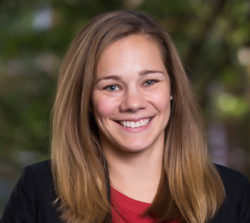Amid COVID-19, businesses will have to implement new procedures and training methods; Vanderbilt researcher Megan Lawrence examines what practices work best, and why.

How do large, multi-unit firms effectively transfer knowledge about best practices to divisions around the globe? For large companies, a top-down “template” approach—where employees observe working examples of new practices—may be good, but it works in tandem with learning the process locally, says Megan Lawrence, assistant professor of strategic management at Vanderbilt University’s Owen Graduate School of Management.
Examining the implementation of a new restocking process from a Fortune 100 chain retailer, Lawrence found that managers balance learning from a centralized template with what they draw from their own localized experiences. Thus, superior performance of the template is paramount. When a template offers superior store performance, managers and employees are less likely to draw from their own local practices.
“Knowing and implementing a practice in one part of a firm does not necessarily mean it is easily transferred to another part of the firm. What I find time and time again is that the work of transferring and implementing practices is not nearly as simple as we think it might be. Firms need a process and multiple ways to measure performance to get this right,” Lawrence said.
Lawrence notes that understanding the components of how firms learn and share knowledge has become even more important in the era of COVID-19. This runs the gamut from training workers on new health and safety protocols to onboarding employees who may never set foot in an office or meet their supervisor face-to-face.
The data for the study comes from more than 400 internal company reports and files evaluating restocking performance as a result of the implementation of a new practice. Lawrence examined 34 pilot stores, which were the first to receive the template instructions, and 280 nonpilot stories that followed the lead of their counterparts.
“Just about every business—from hotels, restaurants and retailers to white-collar offices—are having to change their practices during this pandemic,” Lawrence said. “Who will be effective at doing this, and why? What are the factors that govern this process? Those are the kinds of questions this type of research addresses.”
Lawrence’s research published in the November issue of Strategic Management Journal.